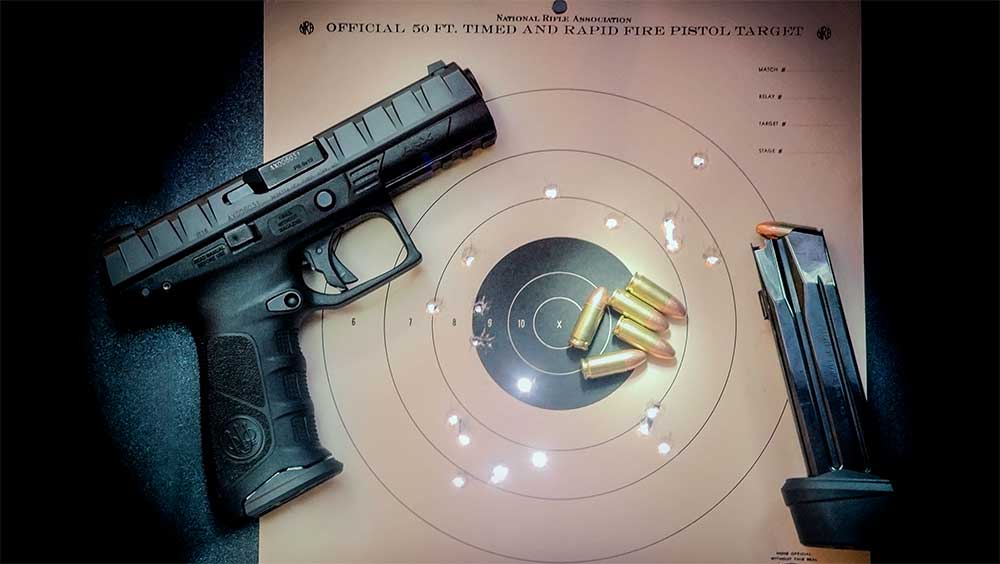
Tac-Con, shorthand for Tactical Conference and organized by Rangemaster Firearms Training, is a yearly get-together of some the best firearms trainers in the world who meet to learn from each other and put on presentation and run shorter versions of their classes so the rest of us can learn from their wisdom. During one range session there in 2018, I watched as an attendee started a particularly challenging drill with gear that obviously wasn’t up to the task.
The shooter in question was using a SIG Sauer P938 (a great little 1911-pattern pistol) and a neoprene-backed hybrid IWB holster. Where everything went off the rails was when they tried to use that holster as an appendix IWB holster, which resulted in a unsafe situation when they tried to reholster their gun. That holster wasn’t designed for that purpose, and as such, the shooter wound up pointing their gun at their belly as they reholstered.
This situation came to mind as I read John Johnston's piece on personal-protection best practices. It turns out that TacCon was this gun owner’s first serious firearms class, and a system of carry that had previously “worked for them” failed once it was put to the test of taking a firearms training class. While that holster and gun combination was probably comfortable to wear, when it came time to actually use the holster for something more than carrying a gun, it failed. What had worked all of a sudden didn’t, and an opportunity to learn from this mistake suddenly presented itself.
On a similar note, because of my job, I pocket-carry a small .380 ACP on a regular basis, and I became convinced that I needed to carry a spare magazine with me, so I selected a pocket holster that allowed me to carry my pistol and a spare magazine at the same time. Problem solved, right? I mean, having enough ammo is important, right? Well, yes, but having a smooth, fast draw is even more important, because that spare ammo means nothing if you can’t get your gun into play when you need it. While doing some basic drills with that holster, magazine and gun combination, I found out the spare magazine was interfering with my ability to get a good firing grip on my gun, which in turn slowed down my draw speed. As a result, I ditched that holster and went with a DeSantis Nemesis instead.
Failing when it doesn’t really matter is how we find the gear that works when it really matters. That opportunity for failure happens when we push ourselves out of comfort zone. Setting yourself up for failure can be scary. After all, no one like to lose. But failing when it doesn’t really count is the best way to not fail when it really counts. Of course, when I say "fail," I don't mean getting into unsafe situations. The failure we're talking about here is the kind where your draw times aren't what they should be, or your hits aren't quite getting into the A-zone.
We are not looking for something that "works for you" under the ideal conditions of a square range, poking holes in a piece of paper at your own pace, with no one watching and judging your performance. What we are looking for is something that works under stressful conditions when it matters most. A good training class provides that opportunity, so do competitions such as practical pistol matches that encourage the use of common concealed-carry gear. Activities like that allow you to find out which parts of your gear need and upgrade and which don’t.
A poorly-functioning gun is another point of failure, but many gun owners don’t know if their gun is truly reliable or not. Keep track of the rounds you shoot at each practice session and make a note each time it fails to function properly in order to find out just how reliable your gun really is. If you can’t go through one range session without a malfunction, it might be time to look at other options.
Your ability to shoot is another big point of failure, and one of the easiest ones to correct. Can you shoot a group? Can you do it at 5 yards? 15 yards? 25 yards? Can you do it with a variety of pistols? If you’re finding your marksmanship skills aren’t up to task, maybe your gun isn’t the point of failure. Rather, it might be time to take a shooting class or two, and put in some serious practice time as well.
Don’t be afraid to push yourself outside of your comfort zone. Learning new stuff means trying new things. It’s much better to fail during practice when it doesn’t matter all that much rather than failing when it’s a matter of life and death.
Editor's note: To piggyback off Kevin's sentiment in this piece, our Skills Check Editor Ed Head develops challenging drills designed to test the skills and concealed-carry rigs of Shooting Illustrated readers. You can find his skill-building range drills by searching "Skills Check" on our website or subscribe to Shooting Illustrated magazine to read his monthly column. To subscribe to Shooting Illustrated, visit the NRA membership page here and select Shooting Illustrated as your member magazine.




































